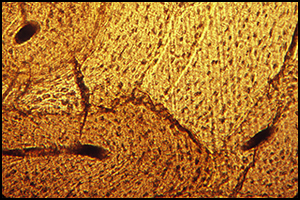Article contents
New information on Melides stable isotopes
Published online by Cambridge University Press: 17 May 2016
Extract

In 1994 we published the unexpected result of an extreme Mesolithic stable isotope signal from a Neolithic context (Lubell et al.1994; Table 1). The sample, identified as Gruta de Lagar I, was from one of two caves at the site of Melides, near the Atlantic coast of Portugal between Sines and Setúbal. A sample from the second cave at Melides, Cerca do Zambujal, gave results consonant with our Neolithic samples from north of the Tagus River. Lagar I, on the other hand, had stable isotope values similar to Cabeço da Arruda N, a Late Mesolithic individual from the Muge Valley to the north-east of Melides.
- Type
- Research
- Information
- Copyright
- Copyright © Antiquity Publications Ltd, 2016
References
- 2
- Cited by




